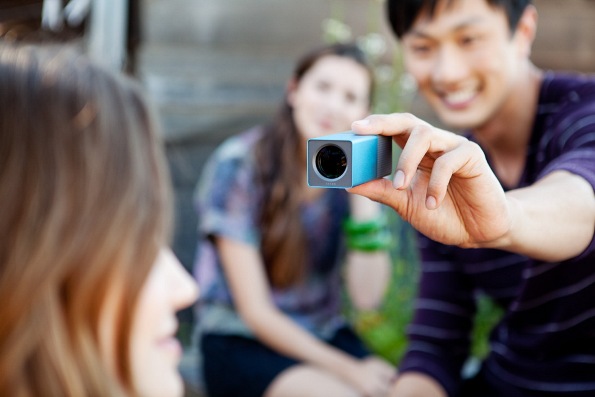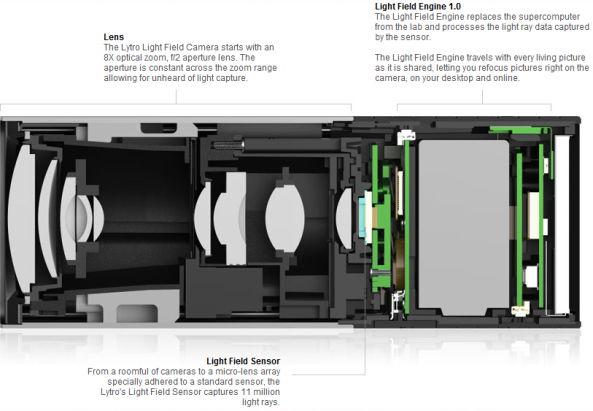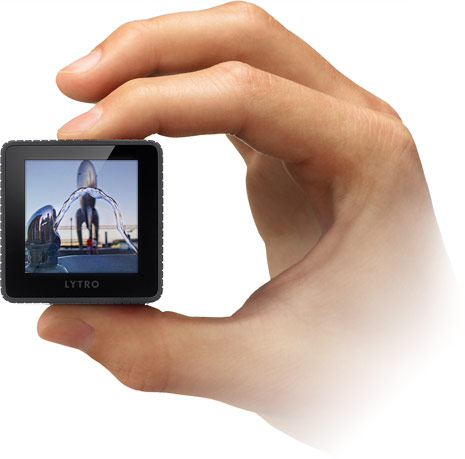Lytro has announced the world’s first affordable, portable, infinite-focus camera.

This new device enables users to take photos instantly, without the delay of an auto-focus, and actually adjusts the focus of an image after a shot has been taken.
The technology works by capturing light-fields that contain not only the intensity, as with a normal camera, but also the direction of light-rays. This feat is made possible through the use of advanced processing, dubbed ‘Light Field Engine 1.0’ and a micro-lens array placed directly on a standard image sensor.

The technology for this isn’t new; it was first trialled over 15 years ago in lab conditions. At that time it required a supercomputer and several cameras. Lytro has been able compress this technology into a handheld 41mm x 41mm x 112 mm cuboid object.
The device itself features a large f/2 aperture lens for wide-angle shots that remains constant over the available 8x optical zoom. The sensor is able to capture 11-million light-rays, which, presumptively, requires far more storage than equivalent 11-megapixel cameras. We suspect that the effective pixel-count will be lower, though details are currently unavailable. The large aperture will likely allow for impressive low-light performance, important as the device does not include a flash.
Found at the opposing end of the cuboid is a 1.46in backlit LCD touchscreen display. There is a top-mounted zoom slider along with shutter and power buttons. Exposure is controlled by tapping the touchscreen. The device is connected to a PC via micro-USB, which is also used to charge an internal lithium-ion battery.

The camera has also been shown to be capable of generating 2.5D images, similar to looking at a pop-art book. In the same way NVIDIA is able to create a pseudo-stereoscopic experience in older games from depth information, Lytro can use the information gleamed from capturing individual light-rays to reconstruct depth within a shot. We use the word pseudo as the generated footage lacks the perspective of capturing light from multiple angles.
The Light-Field Camera is certainly impressive and a step forward for photography. We’ll have to wait for more hands-on information before passing judgement on this particular piece of hardware, but with likely year-on-year improvements, this technology could have a significant role to play in the future of the photography and, perhaps, film industries.
The device is already available for pre-order in the US, scheduled for release early 2012 with prices at $499 or $399 for a 16GB 750 picture model and 8GB 350 picture model, respectively.
Not convinced? Try it out for yourself:













